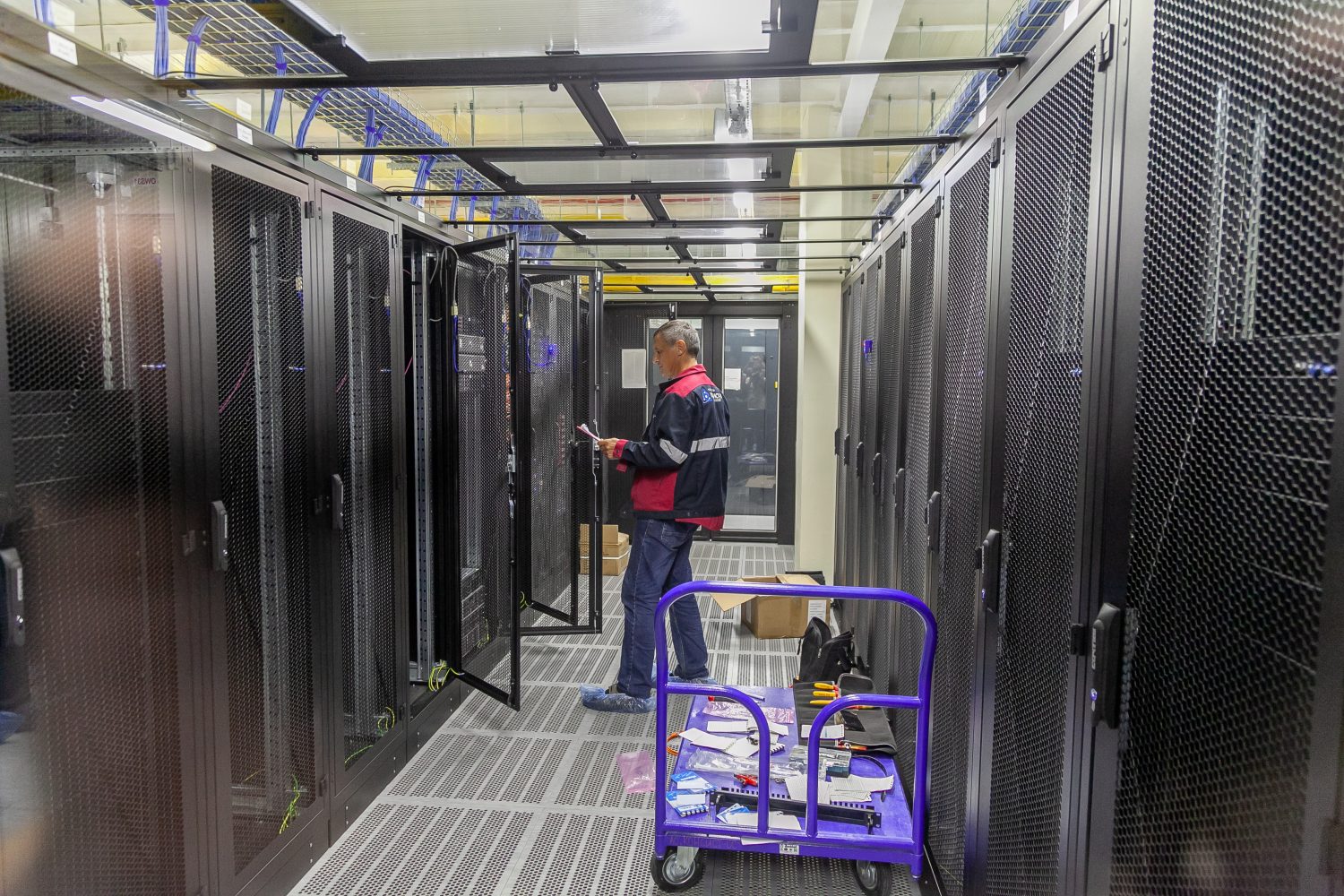
Digital Outfit for Nuclear Stations
back to contentsThe Operation Template is a package of integrated digital solutions for nuclear operators. It supports basic business processes within the plant operation universe, spanning from construction to decommissioning and covering maintenance management, human resource management, relations with grid operators, vendors, consumers, and so on. Each of the processes is managed through a ‘digital assistant’, which is a suite of software applications solving specific tasks.
The Data Center is a dedicated building used to house servers and network hardware.
Operation Template: smart support
The Operation Template consists of three basic components — Technical Documents, Maintenance and Repair Management, and Competency and Knowledge Management. The first component is used to file and store documents and manage access rights. The second component monitors equipment performance, accumulates relevant data and informs the operator when maintenance or repair is necessary. The third component stores information about training programs and employee competencies. These basic components could be supplemented with other digital assistants.
They solve a variety of tasks associated with day-to-day operations of a power plant. For instance, the health monitoring component detects health conditions or anxiety in employees. The smart access control system assigns access rights to employees and grants them access to certain areas inside the plant. Sound alarms of the personal protective equipment (PPE) video monitoring system recommend employees to put on or adjust a PPE item if the camera has detected a violation of PPE guidelines.
The maintenance management component is an AI-based system used to predict maintenance and repairs. It analyzes equipment performance data using mathematical algorithms and provides recommendations if a certain part or assembly needs repairs or replacement. Data accumulation and analysis enable condition monitoring and preventive rather than scheduled maintenance. The preventive approach is expected to extend the service interval.
The HR management component includes a package of onboarding and advanced training programs involving digital and VR simulators. Information about training courses completed by employees, their grades, qualifications, radiation doses and other data is accumulated in employees’ digital IDs.
Some of the Operation Template components have been piloted at the Smolensk and Balakovo nuclear power plants. Starting 2020, the Operation Template will be introduced across all the nuclear power plants in Russia.

Rosatom’s subsidiary Rusatom Service will offer the Operation Template to the companies operating Russian-designed nuclear power plants abroad. Along with selling user licenses, it will also offer consulting services to be provided by the Moscow Technology Excellence Center, related information security solutions, and cloud-based storage and infrastructure services to be provided by Rosenergoatom’s data centers.
Safe and reliable data center
Rosatom’s electric power division Rosenergoatom offers space in its data centers and, if necessary, could build a data processing center at the customer’s premises. The launch of the very first data center at the Kalinin NPP showed that it was a lucrative business.
Commissioned in 2018, the data center has 4,800 racks and a total capacity of 48 MW. Investments in the project exceeded RUB 6 billion. In 2019 alone, Rosenergoatom generated RUB 500 million (USD 6.5 million as of April 6, 2020) in revenue from leasing out space, server capacity and cloud-based infrastructure of the data center. The revenue forecast for 2020 is around RUB 1 billion (USD 14 million as of April 6, 2020).
Having reviewed results of the first project, Rosenergoatom decided to build several more data centers. Three of them will be large-capacity facilities, a 500-rack data center in Innopolis (a satellite town of Tatarstan’s capital Kazan), the second one in Saint Petersburg or Leningrad Region (500–1,000 racks), and the third one in Moscow (2,000 racks). Apart from three large data centers, there is likely to be a smaller one (its capacity is yet to be specified). It will back up the data processing capacity of the situation center at the Russian Institute for Nuclear Power Plant Operation.
The possibility of storing large amounts of performance data is the primary advantage of colocating a data center and a nuclear power plant. There is almost no risk of power outage or data access interruptions. What is more, the colocation eliminates security risks since nuclear stations are among the highest security sites in any country.
Another advantage is compliance with carbon-free requirements, which is necessary to achieve SDG 13 (Climate Action) of the 17 UN Sustainable Development Goals. Electricity powering the data center is generated by the nuclear power plant, so there are no greenhouse emissions.
Finally, data storage and cloud services could be provided not just to nuclear stations, but to other companies and non-commercial organizations as well. The data center is a key component of the infrastructure needed for the digital technology development. All this means that the new data center also contributes to the achievement of SDG 9 (Industry, Innovation and Infrastructure).
- Digital assistants of the Operation Template
- NPP document repository and information model
- Predictive analytics for equipment maintenance
- Voice control and biometry
- PPE video detection
- Health monitoring
- Smart access control system
- Digital X-ray inspection
- Remote crane control
- Fuel assembly loading monitoring
- Robotic fence intrusion detection
- Employee Digital IDs
- VR learning platform
- NPP startup simulator
- 3D hologram and positioning
- 3D drawings and knowledge model
- Robotic process automation (RPA) platform
- Trusted mobile environment




